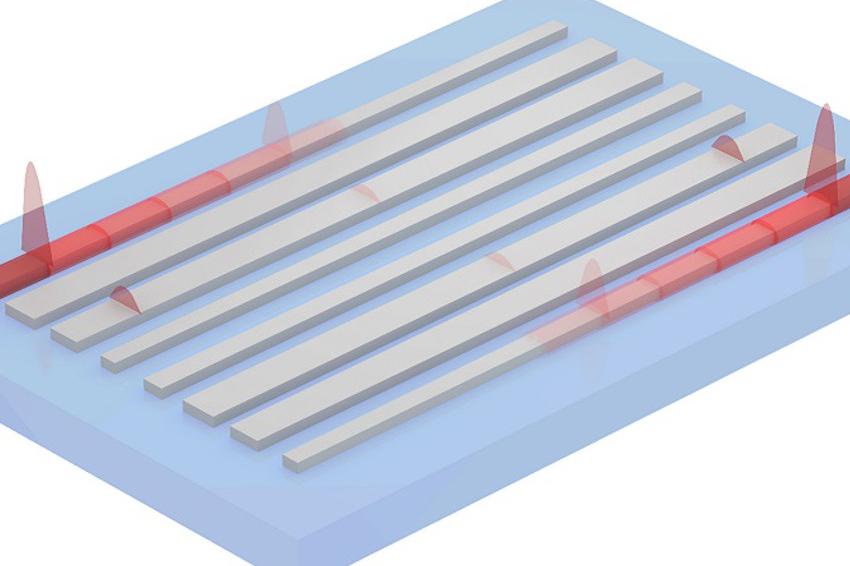Optical control with topological edge states
30.06.2023 - Researchers harness the robustness of topological edge states to manipulate light transport.
Nanophotonics and topology have gained significant interest due to the unique properties they offer. One area of focus is the investigation of topological edge states (TESs). These states have captured widespread attention because they are very resistant to errors and imperfections. Arising from topologically nontrivial phases, TESs provide a powerful toolkit for the architectural design of photonic integrated circuits. TES transport has led to the discovery of various intriguing optical effects and applications, including directional couplers, one-way waveguides, mode-locked waveguides, and pseudospin propagation in ring resonator arrays.
Scientists have recently expanded their efforts to manipulate TESs by exploring techniques such as adiabatic modulation, nonlinear effects, and complex braiding. Optical systems have demonstrated a range of intriguing phenomena, such as edge-to-edge topological transport and tunable localization of topological states. These phenomena hold immense potential for the development of cutting-edge technologies and applications, including energy and information routing, nonlinear photonics, and quantum computing.
While current methods focus on manipulating TESs, they have not yet paid much attention to enhancing the interaction between TESs. By improving the coupling between TESs, researchers can enable the exchange of light energy between different parts of a topological lattice, which can help control the transport of TESs in a more flexible way. A group of researchers from the Wuhan National Laboratory for Optoelectronics (WNLO) and the School of Optical and Electronic Information (OEI) at Huazhong University of Science and Technology (HUST) in China recently made a significant breakthrough. They developed an innovative approach to efficiently manipulate TES transport for an optical channel switcher on a silicon-on-insulator (SOI) chip. Their study focused on edge-to-edge channel conversion in a four-level waveguide lattice using the Landau-Zener (LZ) model. By exploiting the finite-size effect in a two-unit-cell optical lattice, they established an alternative, effective, and dynamic method to modulate and control the transport of topological modes.
The waveguide lattice they used is similar to a 2D material of a Chern insulator, which is known to have TESs. As the number of unit cells decreases, the TESs evolve according to the LZ model. By applying the LZ single-band evolution principle, the researchers were able to dynamically control the TESs and achieve almost perfect channel conversion. Topological LZ nanophotonic devices have the potential to be used in various other applications. They can be used as switches that work at specific wavelengths of light. By incorporating LZ dynamics into different systems, it may be possible to create chiral channel conversions. This concept can also be expanded to more complex waveguide lattices, allowing for even more advanced devices.
The researchers found that these topological LZ optical devices are quite robust, meaning they can work well even when certain parameters are changed. This opens opportunities to develop practical devices such as optical switches for routing networks on computer chips or devices that can combine or separate multiple signals in a waveguide. (Source: SPIE)
Link: Wuhan National Lab. for Optoelectronics, Huazhong University of Science and Technology, Wuhan, China







